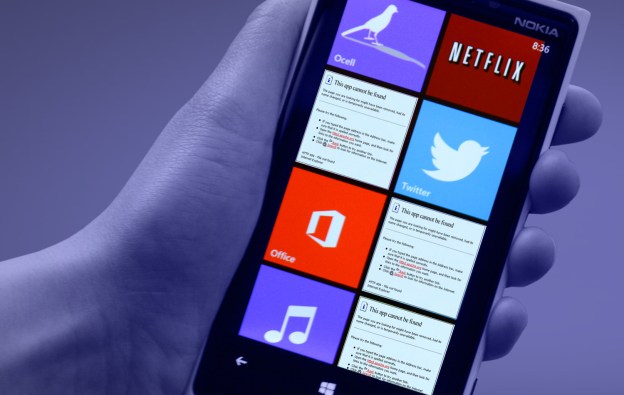
We’re often told, or live under the assumption, that it’s expensive to change from one smartphone ecosystem to another. Once we’ve made our metaphorical bed, manufacturers want us to believe we have no choice but to lie in it. It’s not unreasonable either: Although apps are invariably inexpensive, it’s easy to build up quite a collection, potentially costing well into three figures. The thought of switching is daunting enough without factoring in additional financial pain.
Over the last couple of months, we’ve been introduced to two new smartphone platforms: Windows Phone 8 and BlackBerry 10. While picking up new smartphone adoptees is a key part of Microsoft and BlackBerry’s strategy, the pair also need to draw over users of competing smartphone platforms. If already you’re snuggled deep inside Apple or Google’s bed, but have exchanged flirtatious glances with the Nokia Lumia 920 or BlackBerry Z10, would swapping beds be as difficult and as expensive as we’ve been led to believe?
Before pulling the covers back and saying your goodbyes, an app spring clean will probably be in order. If you’ve been part of a single ecosystem for four of five years, then there will be plenty of apps which haven’t been opened for years, and therefore don’t need to come with you. For the sake of our test, we put together a list of 33 apps. You can see the full list at the end of this article if you’re interested, but for brevity’s sake, all you need to know is it contains an app for each major social network, a few news apps, readers such as Pocket and Alien Blue for Reddit, plus some image editors, music subscription apps, games and utilities. They are all regularly used apps, and would be missed if they weren’t installed on my phone.
The real pain of switching would come when looking for specific titles, particularly games …
How about Microsoft’s world of wonders? Surely it would perform better than BlackBerry World, if only because it has been around for longer. Surprisingly, it was worse, as only 15 of my 33 apps could be found. The omissions are serious too, as there’s nothing by Google, no Zinio, no Peggle, no GTA, Dropbox, IMDb, Snapseed, Instagram or even a decent Twitter client. There was absolutely no compelling reason to switch. The only redeeming quality was the cost, as by only choosing one Angry Birds game, the 15 apps would cost just £0.79 in total.
So the cost of switching, certainly in our test case, is minimal; providing you’re happy with the basics. It’s a myth propagated either by misunderstanding or misinformation, perhaps spread by those with a vested interest in keeping us locked into one ecosystem. The real pain of switching would come when looking for specific titles, particularly games, as I’d be out of luck. It would also be a problem to read any Zinio magazine subscriptions, check Google+, browse used car listings (Auto Trader was nowhere to be found) or enjoy a decent Twitter experience. The real reason not to switch from iOS or Android, then, is choice.
There is another reason switching is less than desirable: Laziness. As an established smartphone user, you’ll be familiar with your apps, and despite our lack of success finding the same ones inside BlackBerry World and the Windows Phone Store, there are sure to be alternatives. For example, Baconit for Windows Phone 8 is a decent alternative to Alien Blue, and both stores have unofficial Google Talk apps, plus Endomondo is just as good as RunKeeper. Put in the legwork, and you can lessen the pain. This comes only after having made the switch though, and if you’ve gone that far, then app availability probably wasn’t very high on your list of priorities.
Ultimately, chopping and changing between iOS and Android is the least upsetting experience, as they both regularly receive not only the latest, but also the most new apps. Deciding to be a Windows Phone 8 or BlackBerry 10 pioneer is considerably more brave, and despite the welcoming hardware, the app stores are still too sparsely stocked to tempt the hardened smartphone owner away from their existing ecosystem of choice.
The Apps:
Google Maps, Snapseed, Camera+, Instagram, Skype, Dropbox, Whatsapp, Google Talk, IMDb, Chrome, YouTube, British Airways (or your airline of choice), Auto Trader (or your used car database of choice), Grand Theft Auto, Angry Birds/Space/Star Wars, Peggle, Facebook, Twitter, Foursquare, Google+, LinkedIn, Vine, Reddit Client, BBC News (or your news source of choice), Pocket, Pulse, Zinio, Spotify, Shazam, Stitcher, RunKeeper and eBay.
Editors' Recommendations
- Every new iMessage feature coming to your iPhone in iOS 18
- Become an iPhone video master with this powerful new app
- Nomad’s new iPhone case and Apple Watch band may be its coolest yet
- Your iPhone just got a new iOS update, and you should download it right now
- Apple just released iOS 17.4. Here’s how it’s going to change your iPhone



